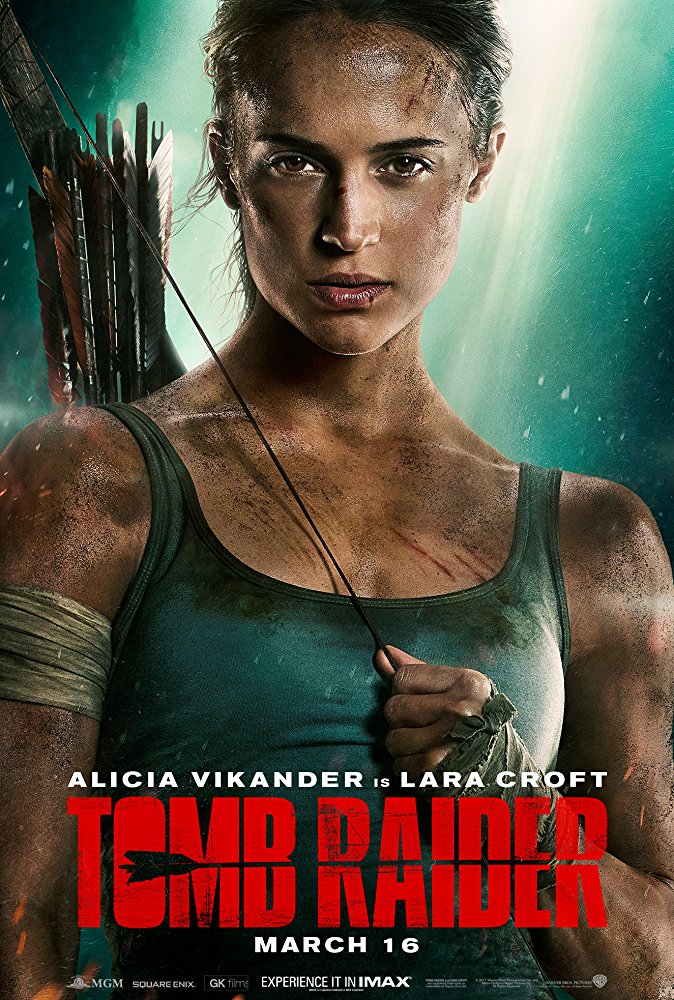‘Tomb Raider’ packs action but lacks liveliness

There’s nothing like a good origin story to take someone who seems impossibly superhuman, altogether infallible and seemingly untouchable, and turn them into someone real and accessible. Such is true for the most recent reboot of “Tomb Raider” starring Hollywood darling Alicia Vikander as the iconic Lara Croft.
The film quickly sets out to establish a young Croft’s character: a bike courier with a reckless spirit and almost single-minded determination, whose hobbies include martial arts, solving riddles and run-ins with the law. Like many twenty-somethings, Croft lacks purpose in her life and is simply struggling to make ends meet — although unlike most twenty-somethings, her financial struggles are self-imposed, having turned her back on her family’s fortune after the mysterious disappearance of her father. It’s not until Croft discovers a clue to his disappearance that the real story begins. Determined to solve the puzzles of both her missing father and the Himiko legend he chased, Croft leaves behind the life she knows to track him down.
Though the film offers a fast-paced adventure from start to finish, its main weakness is that it takes itself too seriously. The film is simply missing that element of fun that fuels other cinematic adventures like “Indiana Jones,” “Pirates of the Carribean” and even the original “Tomb Raider” (2001). It seems as though the writers forgot that the story of Lara Croft is based on a video game (a game!) in which fun is the dominating element.
In fact, for a film called “Tomb Raider,” there’s a severe lack of clue-finding, code-breaking or tomb-raiding. What makes films like “The Da Vinci Code” and “National Treasure” enjoyable is in their succession of clues to find and puzzles to solve. These films bring audiences along for the ride, challenging them to solve the riddles themselves and surprising them with clever twists and booby traps. In “Tomb Raider,” however, audiences will find mostly straight action: gun fights, street chases and hand-to-hand combat. Such sequences do little to set apart “Tomb Raider” from any other film in the action genre. For “Tomb Raider” to not take advantage of the opportunity to deliver something a little different than every other action movie being released these days is a disappointment.
The film also suffers from a lack of character development, which is surprising given the film’s choice to favor a more serious tone. With the exception of Croft herself, the motivations of every character are vague and threadbare, thereby limiting the stakes of what should be life-or-death situations. With two-dimensional characters and a cardboard villain, the film rests mostly on Vikander’s shoulders to carry the weight of the film, and thankfully, she rises to the challenge. While the film initially faced some criticism after casting Vikander as Croft, a role previously held by Angelina Jolie, Vikander offers a level of authenticity and earnest emotion that the movie needs. Vikander is also supported well by Daniel Wu (Lu Ren), who despite limited screen time, delivers a solid performance nonetheless.
Action films, however, have never been known for having particularly moving plotlines or fleshed-out characters. At least “Tomb Raider” achieves the basics of any action movie with sharp fight scenes, thrilling stunts and an overall enjoyable, albeit somewhat mediocre, experience. Additionally, the final scenes of the film do their best to create intrigue for a sequel, so it seems there will be more tomb-raiding to come.
Review overview
Summary
6.6What "Tomb Raider" lacks in cleverness or character development, it makes up for in pure action sequences that will, at the end of the day, entertain the average audience.





















